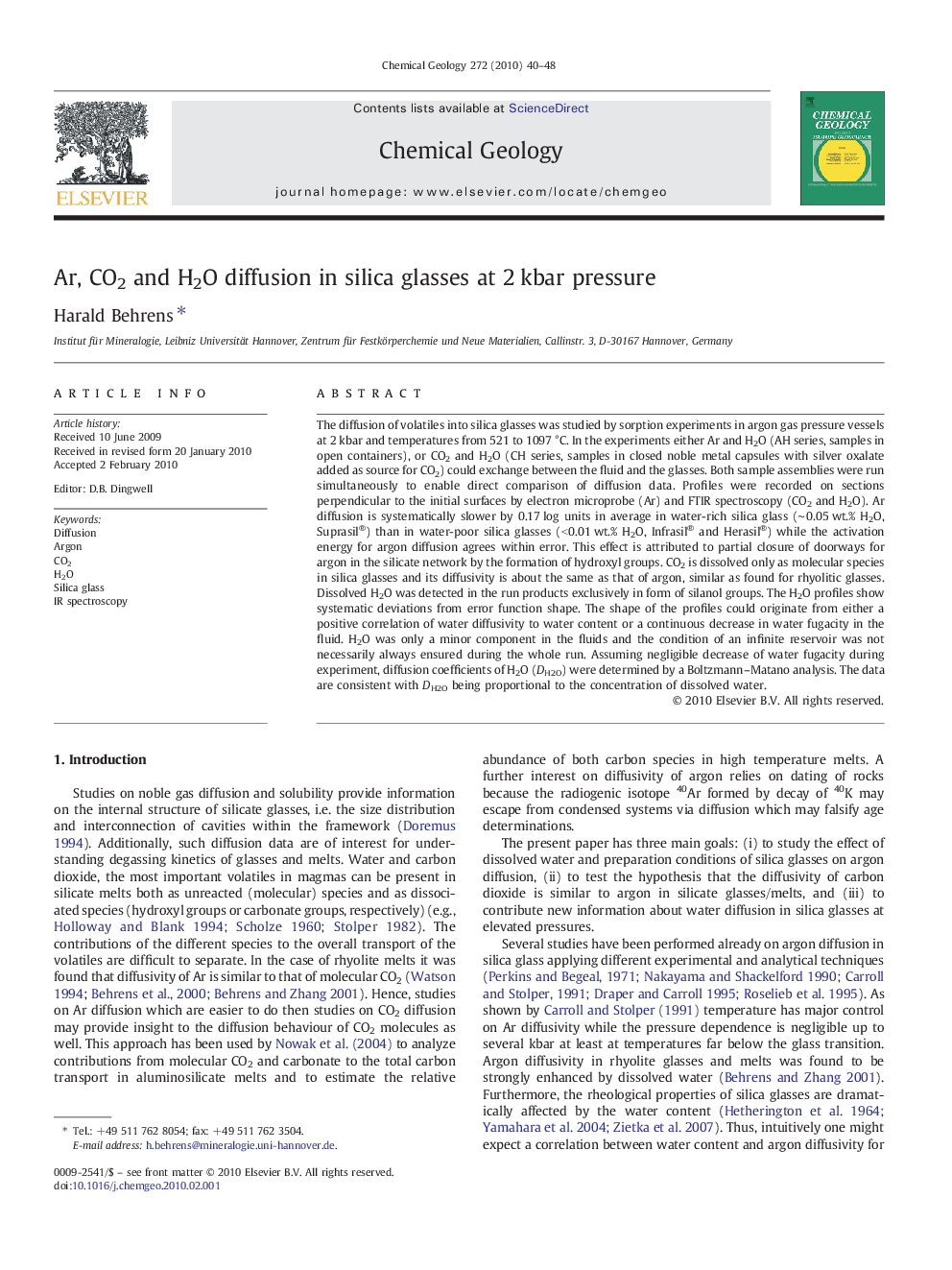| Article ID | Journal | Published Year | Pages | File Type |
|---|---|---|---|---|
| 4700090 | Chemical Geology | 2010 | 9 Pages |
Abstract
The diffusion of volatiles into silica glasses was studied by sorption experiments in argon gas pressure vessels at 2 kbar and temperatures from 521 to 1097 °C. In the experiments either Ar and H2O (AH series, samples in open containers), or CO2 and H2O (CH series, samples in closed noble metal capsules with silver oxalate added as source for CO2) could exchange between the fluid and the glasses. Both sample assemblies were run simultaneously to enable direct comparison of diffusion data. Profiles were recorded on sections perpendicular to the initial surfaces by electron microprobe (Ar) and FTIR spectroscopy (CO2 and H2O). Ar diffusion is systematically slower by 0.17 log units in average in water-rich silica glass (â¼Â 0.05 wt.% H2O, Suprasil®) than in water-poor silica glasses (< 0.01 wt.% H2O, Infrasil® and Herasil®) while the activation energy for argon diffusion agrees within error. This effect is attributed to partial closure of doorways for argon in the silicate network by the formation of hydroxyl groups. CO2 is dissolved only as molecular species in silica glasses and its diffusivity is about the same as that of argon, similar as found for rhyolitic glasses. Dissolved H2O was detected in the run products exclusively in form of silanol groups. The H2O profiles show systematic deviations from error function shape. The shape of the profiles could originate from either a positive correlation of water diffusivity to water content or a continuous decrease in water fugacity in the fluid. H2O was only a minor component in the fluids and the condition of an infinite reservoir was not necessarily always ensured during the whole run. Assuming negligible decrease of water fugacity during experiment, diffusion coefficients of H2O (DH2O) were determined by a Boltzmann-Matano analysis. The data are consistent with DH2O being proportional to the concentration of dissolved water.
Related Topics
Physical Sciences and Engineering
Earth and Planetary Sciences
Geochemistry and Petrology
Authors
Harald Behrens,
